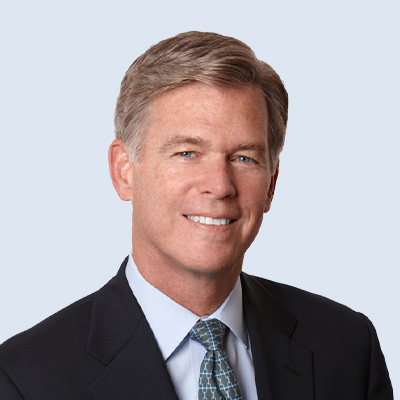Gary Tubridy: Gary Tubridy, senior vice president of the Alexander Group, with the 2019 executive forum. I’m here with Aamir Paul, U.S. country president for Schneider Electric. Aamir, great to have you here.
Aamir Paul: Thank you for having me.
GT: Thank you for joining us. Schneider Electric―it’s an old company. It’s a big company, but it’s a quiet company because there’s so much going on and I’d like people to understand that.
AP: We are 183 years old. I joke. The company started making cannons for Napoleon, and then as any startup. No, literally, as in any startup, then pivoted into electricity because that was the new emerging technology in the late 18th century; and has been doing that since. But people know us, Gary, from our sub-brands.
In the United States, Square D. Four out of 10 homes in America have Square D contents in them. They know APC American power conversion. As a purpose, our goal is to make sure light is on for everyone, everywhere. And we think of access to energy is a basic human right. And we don’t talk about that too much in this country. We are now, because of what’s happening in California.
But in places like India and China, there are millions of people who are getting access to energy for the first time in their lives. And so I think that is our purpose. Now, there’s a lot more to what we do, but we are the world’s leader in electrical automation and management; and that’s the purpose of the company.
GT: And that is a pretty big solution set that you are bringing to bear on the world and the various peoples, countries and companies that make it up. Neat stuff. Tell me a little bit about your role as country president here in the U.S.
AP: I joined the company about seven years ago. And my job is to really, ultimately, represent the needs of our customer segments back to the company as best we can. We want to be the most local global company. So, in China, we’re Chinese. In the U.S., we’re American. And Europe, we’re European. And we may have French roots, but the goal is to be as local as we can be in these markets. And my job is to make the resources of the company work in the United States for our customers across all sites.
GT: Tell me a little bit then about who your customers are and maybe a little bit about how that has changed over the last decade or so.
AP: It’s actually a really exciting time. Any building, any place where we’re consuming energy, whether it’s an industrial factory, a plant, a package consumer goods company, a data center. We’re part of that process. Now in where that’s changing, this is the most exciting part, there are two vectors that I think are most compelling. One, the energy consumption vector is changing. So, for a long time, you had the utility and an alternative was the diesel engine.
Today, solar, wind, battery. The vectors of energy consumption and what we call distributed energy means that management of that is very, very different. And so we’ve built more microgrids in the U.S. than any of the company, and we think we’re at the beginning of an energy revolution where people move away from centralized utilities to distributed energy.
GT: So this could be used.
AP: It could be the first big change since, really, the 50s. And the second part, that I think is super compelling, is connectivity. We like to say we make the things in IOT, and we bring pragmatic starting points for connected solutions to infrastructure. So those are the big drivers that we’re working on.
GT: What are the functions that the revenue leader needs to touch and influence?
AP: My big thesis, is this notion of having empathy for the customer mission. And…I’ll give you sort of an interesting compare, that I think about, which is in software, as a service company, is we talk about customer success executives, right? Why? Well, because in software, as a service company, it’s quite easy to get on the platform, and it’s equally easy to get off the platform. So you create a new role that works with your customers, to make sure they get value out of software so they keep using it and they stay on your platform.
Okay. Well, in every other firm, in every other sales motion, are we not interested in customer success? Once we sell them, is it okay to walk away and not care about outcomes? Is the job, as an infrastructure provider, to just build a hospital? Or make it a smart hospital?
And so the challenge that I’m giving my team, from a revenue leadership standpoint, is to not just focus on the transaction, but focus on the why, the purpose of the customer, and stay with them through the life cycle. More and more customers are looking for people who can help them solve problems, and I think that transition is an important transition.
GT: Aamir, who is responsible for revenue leadership at Schneider U.S.?
AP: We have a large sales organization, but ultimately it’s me and my senior leadership team. We have businesses that go from $200 million to about
1.3 billion. Each of them focus on different sub-segments. And, collectively, we sit down and we look at opportunities to make sure we’re serving our customers well. In addition, we’ve created a sales operation structure that helps oversee across all of them.
GT: Are there any common challenges that they face in the management of the revenue engine for Schneider?
AP: Many. How we use data more effectively. How we can get the right combination of inside sales and outside sales. How do we manage the generational transition, as a lot of very experienced domain experts start to retire? And that is very true in the industrial space. Right?
GT: Yes, it is.
AP: So as a sector, we’re going to see this generational shift, and how do we accommodate that? How do we allow for human creativity to be unleashed by taking away the mechanical work that we ask people to do? And how do we make sure that that can be done through algorithms and systems that work for the sellers, rather than oversight systems? One of the things, based on some of the work we’ve done with your organization, Gary, is we’ve now created one centralized sales operations team that is helping those sales leaders with that problem. And a lot of that thinking came out of the work we did with your team.
GT: Any initiatives that you’re working on, in the next year or so, to rev up the revenue engine at the Schneider in 2020?
AP: Problem number one, we have a lot of really experienced sales engineers. And when I say really experienced, I mean 20, 30, 40 years in the role that are about to retire. And how do we take that experience and wisdom, and replace that? Super hard.
Problem number two, we have this mechanism where we want to create much more digital solutions on the IOT side, but we still want people who can help cover the core. So, the new engineers we’re hiring tend to have much more software experience and come from a much more tech background, but how do we cover the gaps on infrastructure?
And so we came up with the new model, and we call it expert access. And the idea is we turn to someone who’s about to retire and we say, “Look, you’ve been working 100 miles an hour, don’t just retire. We’re going to give you your healthcare benefits, work from home three days a week, and you’re available on-call to that new engineer that’s just come in.” From a cost standpoint, it’s about a third of the cost when they were in the field. Their quality of life, forget four day work week, it’s a three day work week. They keep their healthcare benefits, and yet they’re coaching, in real-time, the new hires that we’ve just gotten from the university. And as an architectural model, it’s worked phenomenally well.
GT: That’s great.
AP: Now from things that we’re most excited about, I’ll just share two more. One is what we’re doing in California with microgrids. You can’t build a single-family home in California without solar. So I think the motion to distribute energy is just going to get accelerated because of what’s happening right now. And then the second one is we’ve created a new company with the Carlyle Group, called AlphaStruxure. And Carlyle’s brought its capital, we’ve brought our technology resources, and one of the projects we’re most excited about is the rebuilding of JFK.
It’s starting next year, and it’s going to take at least 10 years. But the fact that we can take some something that is honestly an entry point into the country and be part of that, it’s just a privilege.
GT: Oh, that’s great. Aamir, what do you recommend revenue leaders be laser-focused on in 2020?
AP: Revenue leaders are the most important barometer of what your customers expect from your organization. What happens in companies sometimes is we get so obsessed about what we want to do onto the world that, it’s our acquisition plan, it’s our marketing plans, and we lose sight of the value we’re trying to create for our customers. And when business models, and business model half-lives are compressing, but when business models fail, it’s because somewhere along the way the customer needs have shifted, but the model that’s inward-focused hasn’t adapted.
And so I think, in a period where change is happening faster and faster, amongst all the things they have to do, which there’s no giving up on the quarterly delivery or the profit expansion on the productivity. But amongst all the things they have to do, revenue leaders have to be the representative of the customer back to the organization, and they have to be the early warning signal when the current business model isn’t working. Because if they don’t do that, then by the time it shows up in the numbers, it’s often too late.
GT: Great speaking with you, Aamir. Thank you so much, and great to have you.
AP: Thanks for having me.

